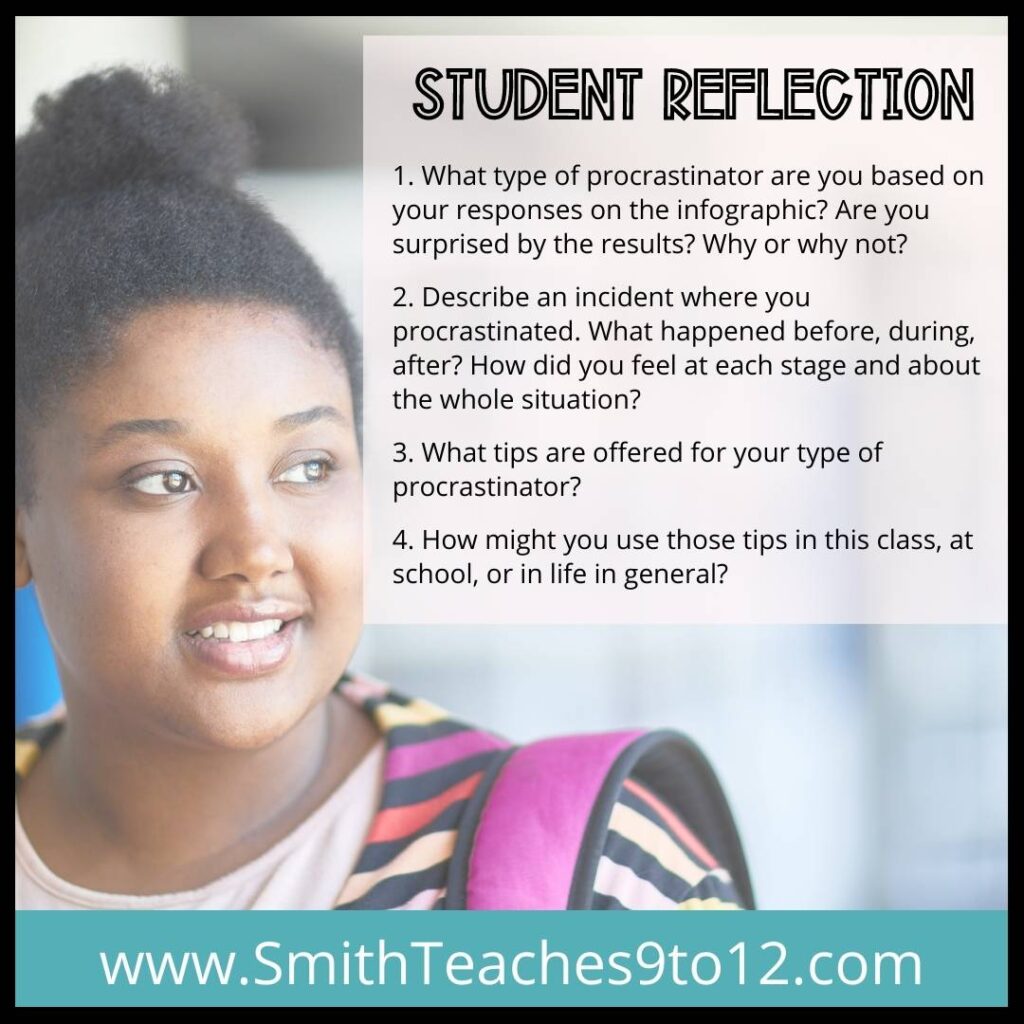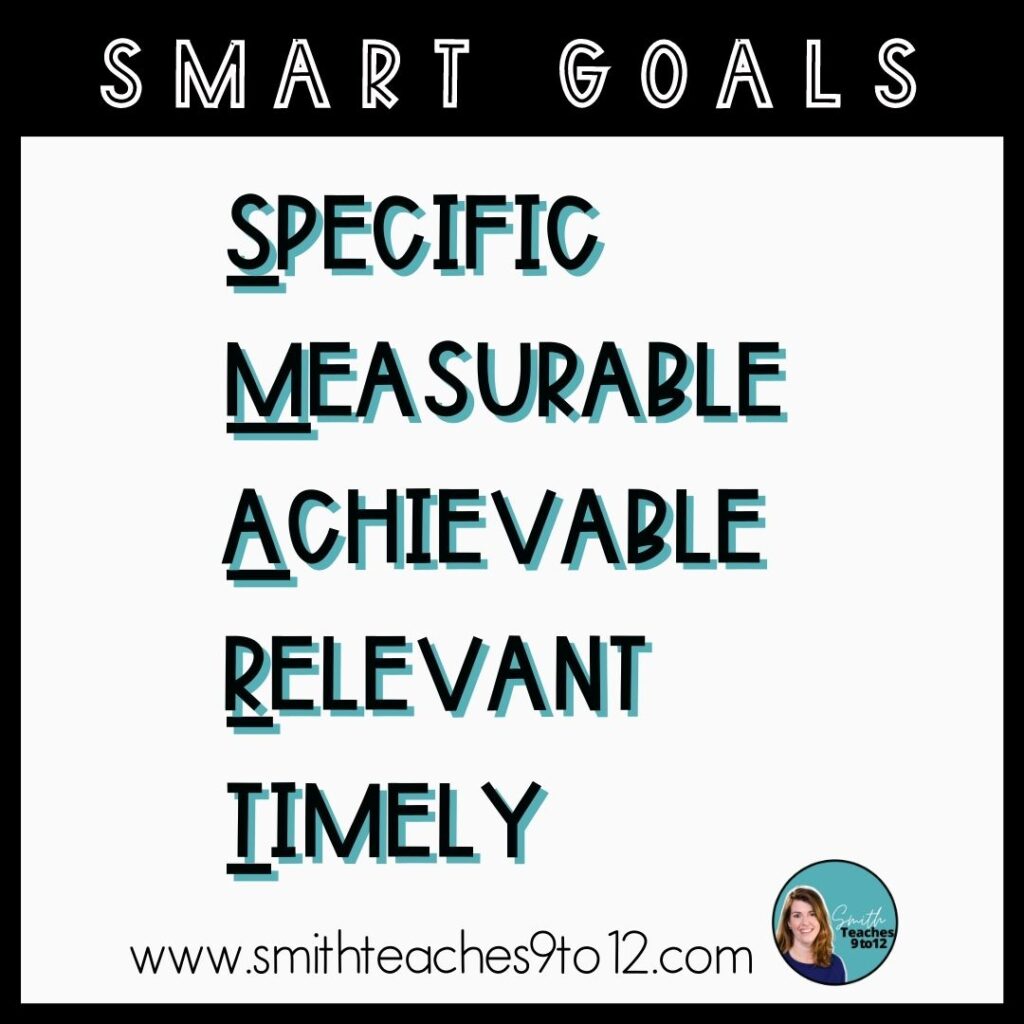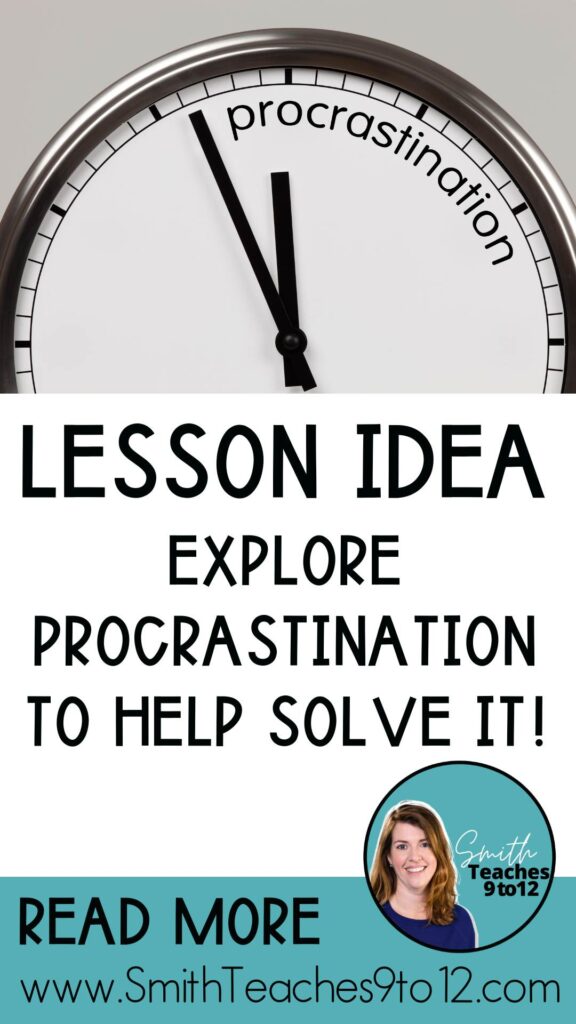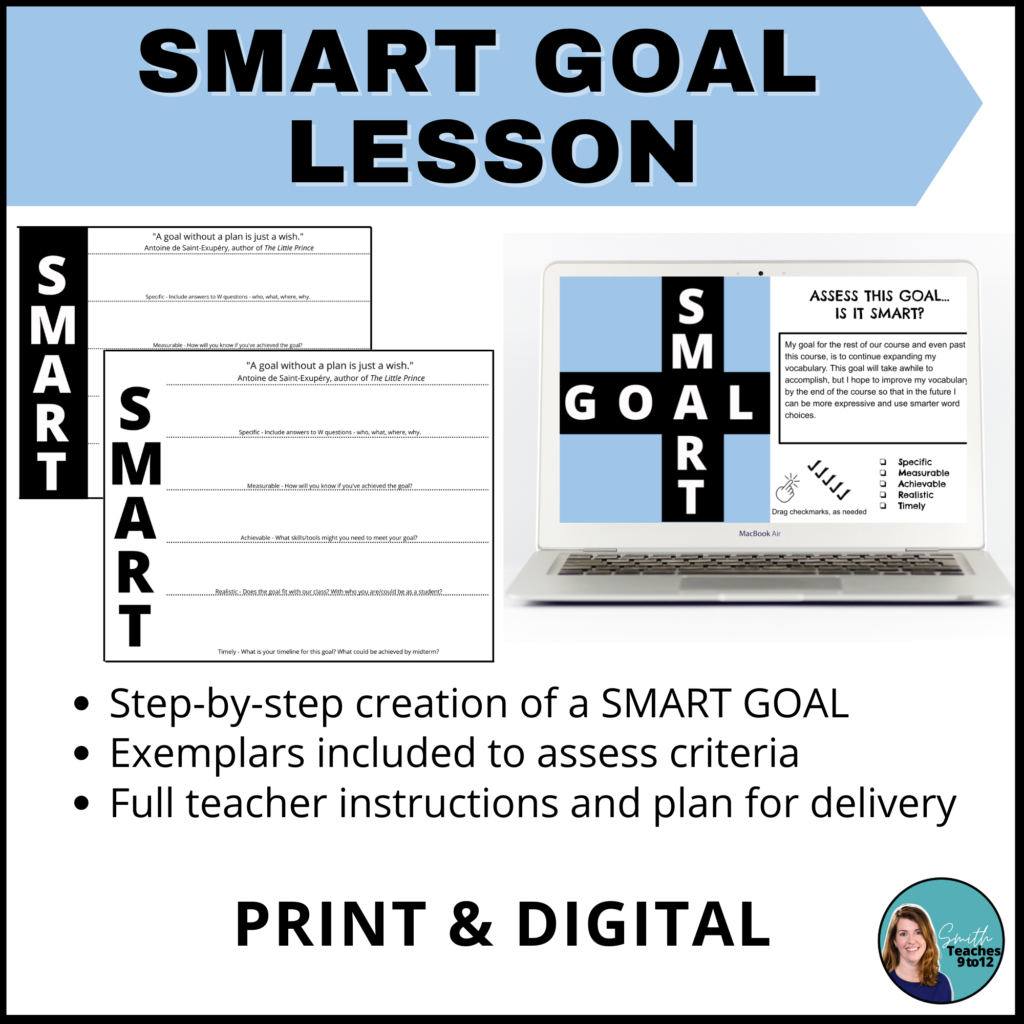Sharing is caring!
You know that line about putting the Pro in procrastination? I love it! Not just because I’m an English teacher and word nerd but because it is so true. So true! When I was a graduate student I really became a pro at procrastinating. I met my deadlines but first I had a sparkling kitchen, all clean laundry, and nearly a 3-course meal for breakfast, lunch, and dinner. So when I tell my students I know procrastination, and we focus on tips to avoid procrastination, I really, really mean it!
But it had me thinking, we talk about procrastination. We encourage students not to leave things until the last minute (even though we do it… I’m talking to you/myself with the pile of papers still to grade even though I’m writing this post!). But what we might not explicitly do in class is teach students how to put the pro in procrastination in a way that leads them to remain successful in meeting expectations and deadlines without undue stress.
Here is a lesson suited to mid-fall when deadlines start piling up and that back to school enthusiasm wanes too!
Step 1: Identify Types of Procrastination
Before focusing on specific tips to avoid procrastination, begin with a definition of procrastination. Let students lead this process.
Consider using a ‘budget’ to define the term. This introduces a little critical and creative thinking with a side of financial literacy incorporated into the lesson. Students have an imaginary $5 to define the term, with a cost of 50 cents for each word. To create more of a challenge, reduce the budget, increase the cost of each word, or make it so that they cannot ‘save’ money for the definition. Students can share definitions in groups and then create a combined one to share.
A next step is to then have students explore different types of procrastinators. Use an infographic like this one to have students follow the path of questions and answers to determine their type. They might find themselves identified as a daredevil, self-saboteur, ostrich, chicken, perfectionist.

Another option is to have students explore their enneagram type and look to ways to be more productive. This nonfiction article includes a link to determine enneagram types and then outlines ways to be more productive for each type.
Step 2: Personal Reflection
After students have read about their type, have them write a short reflection. The goal here is to get students thinking about procrastination of the past so they can address procrastination of the future.
Here are four key questions students can address in a short written response or a recorded audio/video response:
- What type of procrastinator are you based on your responses on the infographic? Are you surprised by the results? Why or why not?
- Describe an incident where you procrastinated. What happened before, during, after? How did you feel at each stage and about the whole situation?
- What tips are offered for your type of procrastinator?
- How might you use those tips to avoid procrastination in this class, at school, or in life in general?
With a slight tweak these can work if students focused on the productivity of their enneagram type.

Step 3: Establish a Plan
The final step is to put the knowledge into a plan of action. A great way to do this is to have students set a SMART goal.
Use the knowledge gained from procrastinator types, along with bits from their personal reflection, in order to make a goal that is actionable for them. This goal could be for your class, for school, or for life in general. The key is to make sure to address the ‘T’ in SMART ; the T stands for time-bound. That way you can revisit and re-assess. In order to make this a communal goal assessment, consider setting a deadline of 1, 2, or 3 months (at most) so that everyone can revisit their goal at that time.

In that revisiting students can take their goal from SMART to SMARTER, which means they’ll Evaluate and Reward their efforts. At this time students should reflect on what has or has not worked for them. If their evaluation indicates that they were successful with their goal, then encourage them to set another. If a student is not yet successful in the goal, examine why and review the goal to shift it to something more achievable in the next time period allotted for another goal.
This NO PREP lesson for goal setting and growth mindset includes full teacher instructions. Introduce SMART goals with exemplars for students to assess the criteria and then create their own goal using step-by-step instructions in print or digital format. A final component to review later in the course is included too.
We all know we will procrastinate, like the sun rises and sets it’s inevitable. BUT, with this lesson and its tips to avoid procrastination there will be a reduction in procrastination and an increase in productivity!


Related articles:
- Infusing Career Career Exploration for High School into ELA
- Career Exploration and Podcasts
- 3 Steps to Measure Growth in Students’ Skills





